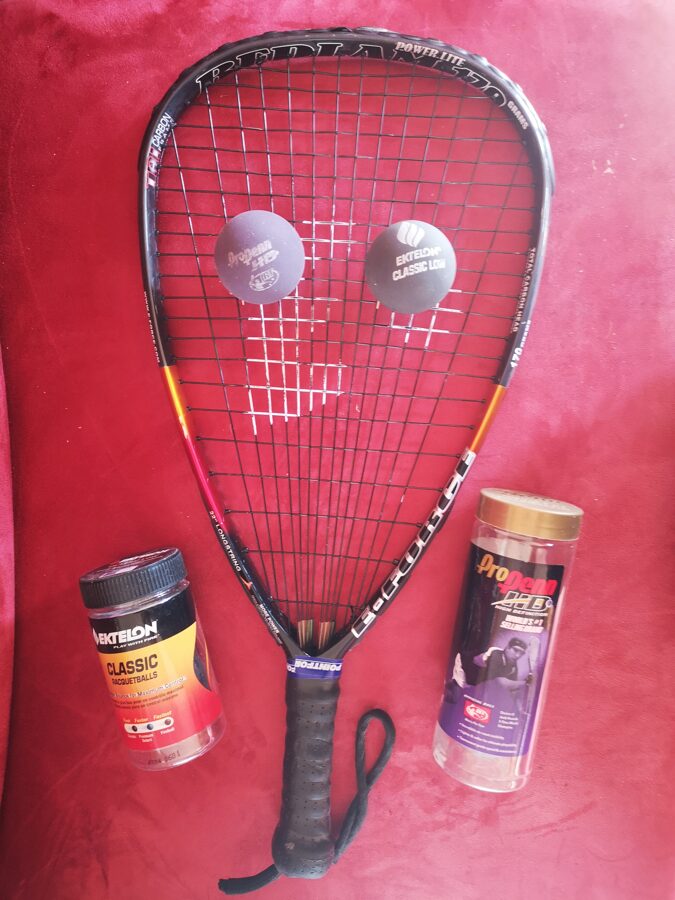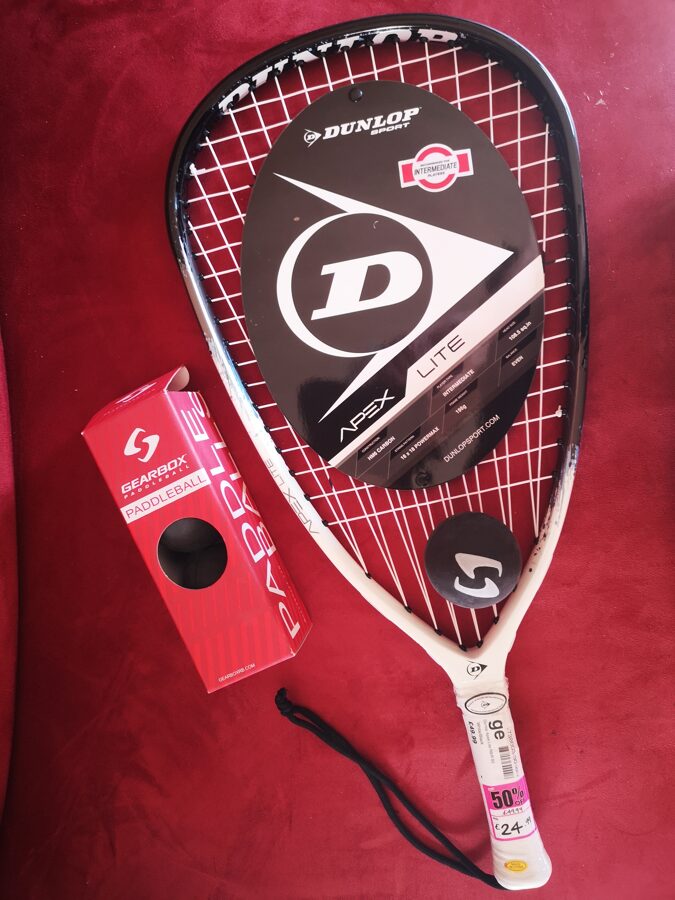The Game of Rapidball
Rapidball is a racket sport that is played on a regular squash court, but with different rackets and balls.
The racket has a larger head than a squash racket, and the ball is both larger and jumps higher than a squash ball. It's easy to get started with Rapidball. The racket head sits close at hand and the ball is easy to follow. The ball also tends to bounce off the walls so the game is easily kept going. The ball and rackets seem recognizable to people with e.g. tennis background.
The rallies in Rapidball are typically long. You get lots of sweat on the forehead. But the load on the knees, hips and other joints is small, i.a. because you can usually hit the ball at hip height. Thus, Rapidball is also attractive to practitioners of other forms of racket sports, in case your body cannot endure the same efforts as before and you really hate the idea of having to give up the pleasures of a nimble racket game.
 E-force racket with Penn and Ektelon balls from US racketball. The balls have a high bounce when they hit the floor or walls
E-force racket with Penn and Ektelon balls from US racketball. The balls have a high bounce when they hit the floor or walls
 Dunlop racket with Gearbox balls from Four Wall Paddleball. These balls are tennis ball size with a small hole in them, which results in a more moderate bounce.
Dunlop racket with Gearbox balls from Four Wall Paddleball. These balls are tennis ball size with a small hole in them, which results in a more moderate bounce.
